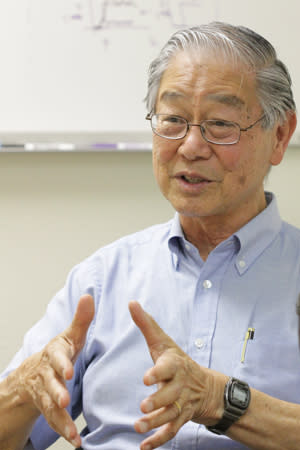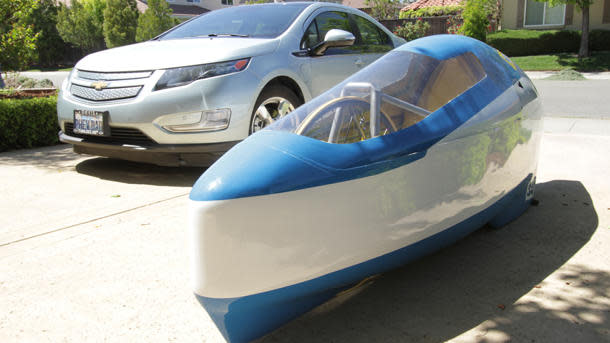 Motoramic
MotoramicHow the father of plug-in hybrids still has a race to finish
For more than 25 years, engineering students at the University of California-Davis have sought ways to make the world burn less oil on "Team Fate," a name borrowed from the film "The Great Race," where Jack Lemmon's Professor Fate never faltered in his goal of winning a New York-to-Paris contest. It's one of several honors for Andy Frank, a real-life Professor Fate whose ideas have made him the father of plug-in hybrids, a technology he's still racing hard against fate.
Raised in Pasadena hot-rodding everything from Chevys to Porsches, Frank helped design supersonic aircraft and missile-guidance systems during the Cold War and had a hand in landing men on the moon for NASA. This is not your average eco-machine warrior.
"To truly change the world, we have to do it so everybody wins, including the oil companies," says Frank, 78, a soft-spoken mechanical and aeronautical engineer whose office wall features his patent for driving a car off a combination of engines and batteries.
"The all-electric car is still 40 or 50 years ahead of its time, because we don't have the infrastructure to support it yet," he says. "But by using electricity as well as gas, though just less of it, we can go a long way to solving our problems."

"Most people don't think past tomorrow. You have to have a longer view of the world."
No one was paying attention when Frank first found his message. Automobiles on the road when he began his work wasted 80% of the energy they carried in their tanks. Through the morass of possible solutions, Frank came to believe the best alternative was to recapture energy by using the car's own motion to charge batteries, or add to what the car already carried through an electrical outlet. Today, most major automakers around the world have some kind of hybrid system in production or their labs that draw from Frank's ideas -- and in several cases, built by the engineers he trained.
Although well beyond retirement age, Frank comes to work daily at a nondescript warehouse just south of Davis. It's the headquarters of Efficient Drivetrains Inc., and today Frank and a few students are running diagnostic tests on a massive flywheel system destined for a delivery truck.
Many of Frank's clients today hail from China, where Frank emigrated from as a child at the dawn of World War II. China, he says, wants alternatives to fossil fuels badly as it becomes the world's largest market for new vehicles; just recently, the China State Council announced it wanted 500,000 plug-in and electric vehicles on the roads by 2015, and some 5 million by 2020.
It's less about the environment, but rather an "acknowledgement that global fuel reserves are dwindling and prices are going up, so they want cars that aren't going to rely as heavily on gas," Frank says.
Among the many fuel-sipping hybrids he's built since landing at Davis 25 years ago, none tops a one-man, bullet-shaped, bicycle-tired contraption constructed in 1989. The idea was to see how many miles could be traveled on one gallon of gas. "People were shooting for 300 miles, but we hit 3,300," he says, a proud smile creasing his face.

 Yahoo Autos
Yahoo Autos 
